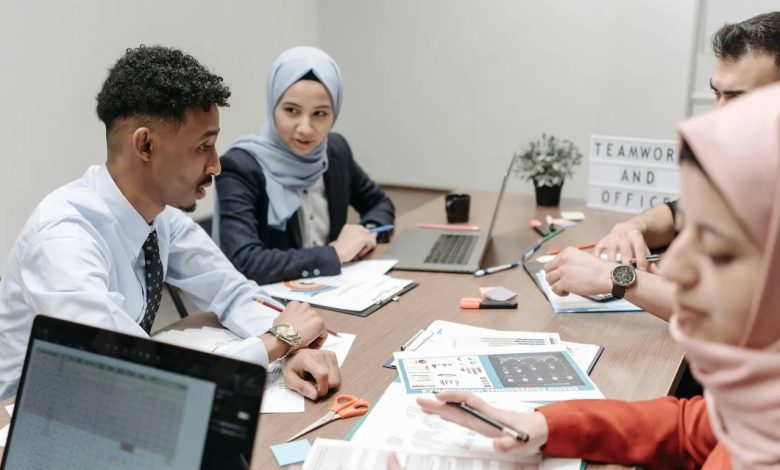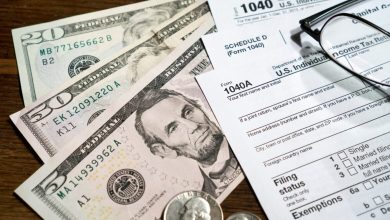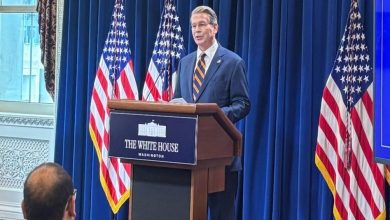Workplace Inequality in America: Do Arabs and Muslims Face a Job Market Gap?
Exploring Employment Disparities Between Arab and Muslim Americans and the General U.S. Workforce.

While the U.S. job market prides itself on meritocracy and opportunity, many minority communities continue to face structural disadvantages. Among those most affected are Arab and Muslim Americans—two overlapping but distinct groups who often experience unique barriers to employment and career advancement. From hiring discrimination to credential under-recognition, a growing body of research suggests that Arab and Muslim individuals face a persistent gap in the U.S. labor market compared to the general population.
1. Who Are Arab and Muslim Americans?
Before exploring the employment gap, it’s important to understand that Arab and Muslim are not synonymous:
-
Arab Americans are ethnically defined and originate from 22 Arab League countries, including Lebanon, Egypt, Iraq, and Palestine. They may follow Islam, Christianity, or other faiths.
-
Muslim Americans are defined by religion and come from a range of ethnic backgrounds—South Asian, African, Arab, Caucasian, and more.
Despite these differences, both communities often share similar employment challenges, particularly in areas where their identity is visible (e.g., names, attire, language).

2. Evidence of Employment Discrimination and Disparities
A. Hiring Bias and Resume Discrimination
Numerous studies confirm that Arab and Muslim Americans are at a disadvantage when applying for jobs.
-
A 2017 study by the University of Toronto found that job applicants with Arab or Muslim-sounding names were 30% less likely to get callbacks than those with Anglo-American names, even when qualifications were identical.
-
The Equal Employment Opportunity Commission (EEOC) has reported a disproportionate number of complaints from Muslim employees, especially post-9/11 and during times of political tension.
-
A 2019 study from the Institute for Social Policy and Understanding (ISPU) found that 1 in 4 Muslim Americans reported job discrimination, compared to only 6% of the general public.
B. Unemployment and Underemployment
Despite being well-educated, Muslim and Arab Americans often experience higher unemployment and underemployment rates:
-
According to Pew Research (2021), Muslim Americans had an unemployment rate of around 8%, compared to 4% for the general population.
-
A report by the Arab American Institute (2022) highlighted that many Arab immigrants hold advanced degrees, yet work in low-wage jobs due to non-recognition of foreign credentials.
-
Arab women, especially those who wear the hijab, face double discrimination—both as women and as visible Muslims—limiting their access to higher-paying jobs or promotions.
3. Structural and Cultural Barriers in the Workplace
Beyond overt discrimination, there are systemic issues that further widen the employment gap:
A. Recognition of Foreign Degrees
Many Arab and Muslim immigrants hold advanced qualifications from their home countries, but:
-
Their degrees may not be recognized in the U.S.
-
Licensing requirements can be costly and time-consuming, discouraging full career re-entry.
B. Lack of Professional Networks
Success in the U.S. job market often depends on connections and networking—resources that first-generation Arab or Muslim immigrants typically lack.
C. Workplace Bias and Lack of Accommodation
-
Religious practices, such as prayer or fasting during Ramadan, are often misunderstood or even frowned upon in some work environments.
-
Some Muslim women report pressure to remove the hijab or avoid religious expression in order to “fit in.”
-
Stereotyping (e.g., linking Muslims to terrorism or Arabs to foreign loyalties) can prevent promotions or access to sensitive roles.
4. Name-Based and Appearance-Based Discrimination
-
A landmark University of Chicago field experiment revealed that applicants named “Mohammed” or “Fatima” received significantly fewer callbacks than applicants named “John” or “Emily,” even when resumes were identical.
-
Visible Muslim markers (hijab, beards, Arabic language, etc.) can trigger unconscious or explicit bias in hiring, evaluations, or workplace culture.

5. Progress and Resilience in Arab and Muslim Communities
Despite these obstacles, Arab and Muslim Americans are making important strides:
A. Rise of Entrepreneurship
-
Arab Americans are twice as likely as the average American to start their own businesses, according to the U.S. Census Bureau.
-
In places like Dearborn, Michigan, Arab-owned businesses dominate sectors like restaurants, healthcare, and auto repair.
B. Education and Advocacy
-
Arab and Muslim Americans are increasingly college-educated, especially among second-generation youth.
-
Advocacy groups such as CAIR, AAI, and ISPU provide career mentoring, legal help, and policy advocacy to protect workers’ rights.
C. Entering New Professions
There is a noticeable shift in the younger generation entering STEM, law, journalism, medicine, and politics—careers that were previously less accessible due to systemic bias.
A Gap That Can Be Closed
Arab and Muslim Americans continue to face a significant employment gap, shaped by factors like hiring bias, religious discrimination, lack of recognition for foreign degrees, and cultural misunderstanding. But thanks to community resilience, education, and advocacy, the trajectory is changing. The path forward lies in promoting inclusive hiring practices, bias training, and policy reform, so that all Americans—regardless of their background—have a fair shot in the workforce.



